
Portrait of Helen Keller, 1904
From Wikipedia. Image is available in the United States Library of Congress‘s Prints and Photographs division
Helen Adams Keller was born on June 27, 1880 in Tuscumbia, Alabama.
At 19 months old, Keller contracted an unknown illness described by doctors as “an acute congestion of the stomach and the brain”,
which might have been scarlet fever or meningitis. The illness left her both deaf and blind.
She lived, as she recalled in her autobiography, “at sea in a dense fog”.
Meeting Anne Sullivan
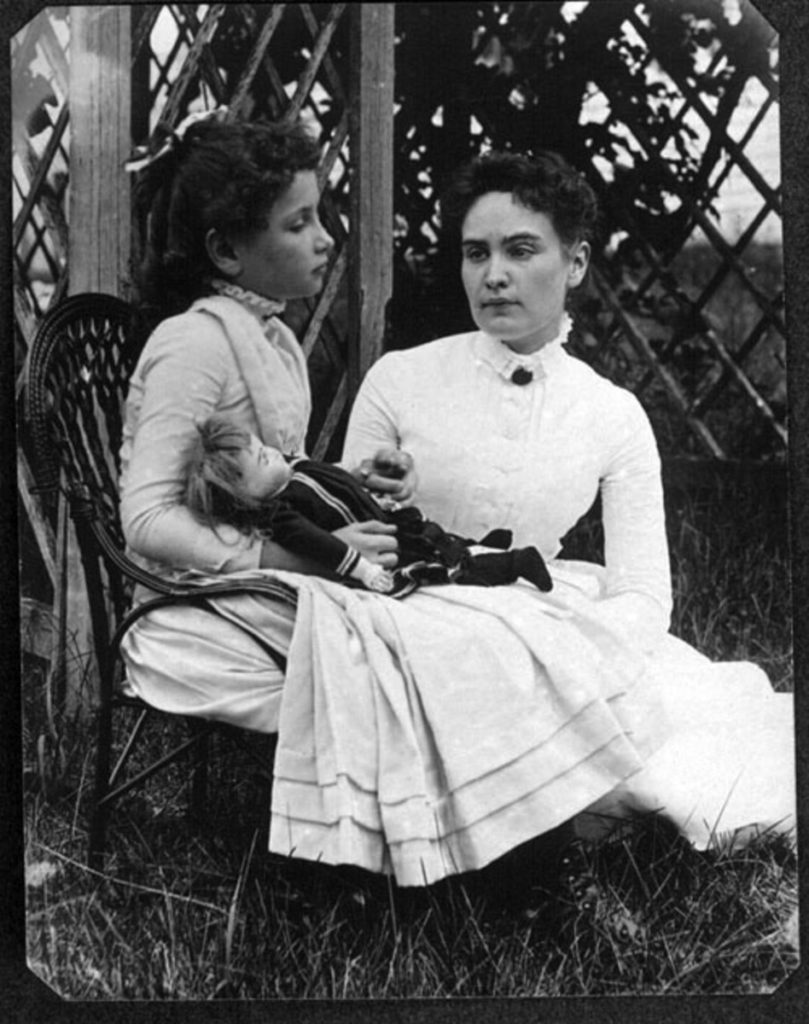
In 1886, Keller’s mother was referred to Alexander Graham Bell, who was working with deaf children at the time.
Bell advised them to contact the “Perkins Institute for the Blind”, where a 20-year-old alumna of the school,
Anne Sullivan, herself visually impaired, was asked to become Keller’s instructor.
It was the beginning of a nearly 50-year-long relationship during which
Sullivan evolved into Keller’s governess and eventually her companion.
Sullivan arrived at Keller’s house on March 5, 1887, a day Keller would forever remember as “my soul’s birthday”.
Keller’s first word
Sullivan began to teach Helen to communicate by spelling words into her hand, beginning with “d-o-l-l”. However, this frustrated Keller at first, because she did not understand that every object had a word uniquely identifying it.
However, a month later, Keller’s breakthrough came when she realized that the motions her teacher was making on her palm,
while running cool water over her other hand, symbolized the idea of “water”.
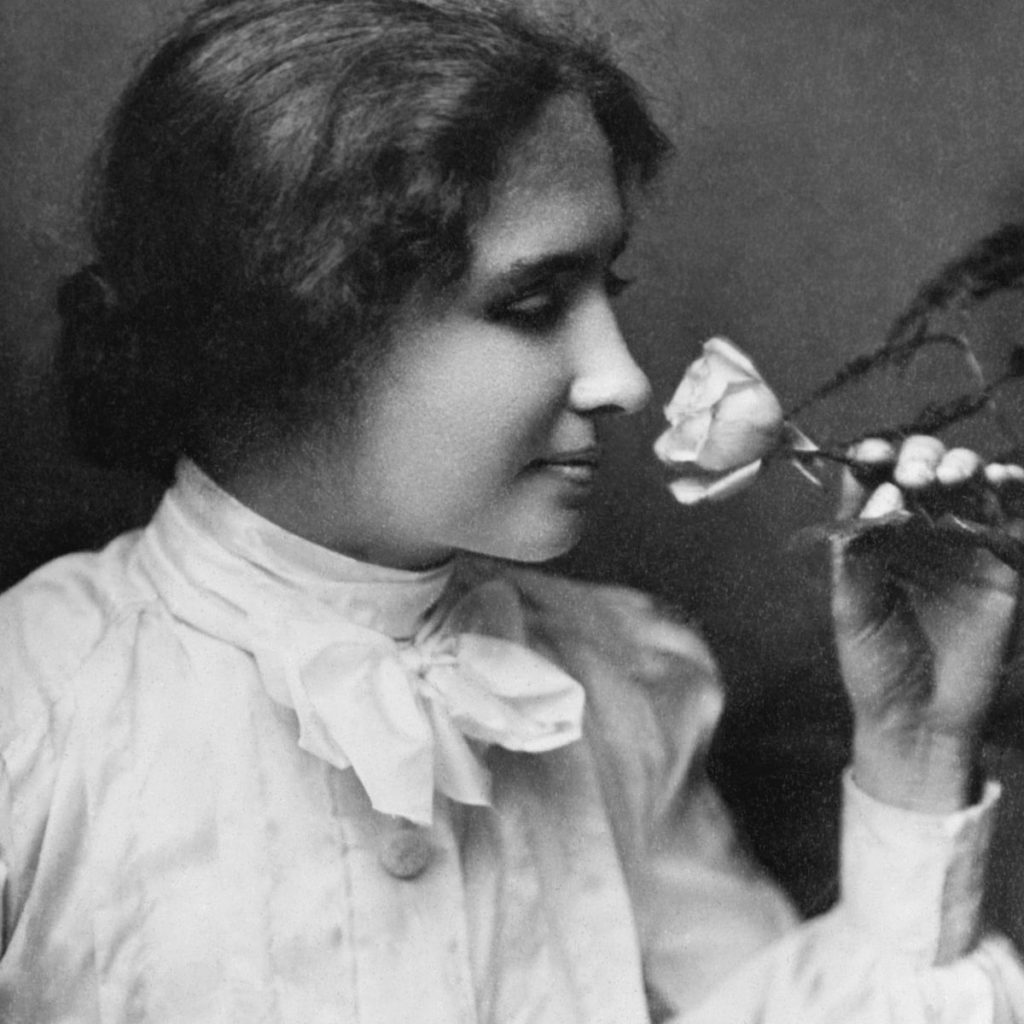
The Century Magazine, 1905.
(Photo by Bettmann via Getty Images)
“The living word awakened my soul, gave it light, hope, set it free!.”
— Helen Keller
The lessons continue
Determined to communicate with others, Keller learned to speak and spent much of her life giving
speeches and lectures on aspects of her life.
She learned to “hear” people’s speech by reading their lips with her hands, as her sense of touch had heightened.
She became proficient at using braille.
Shortly before World War I, she learned that by placing her fingertips on a resonant tabletop she could experience music played close by.
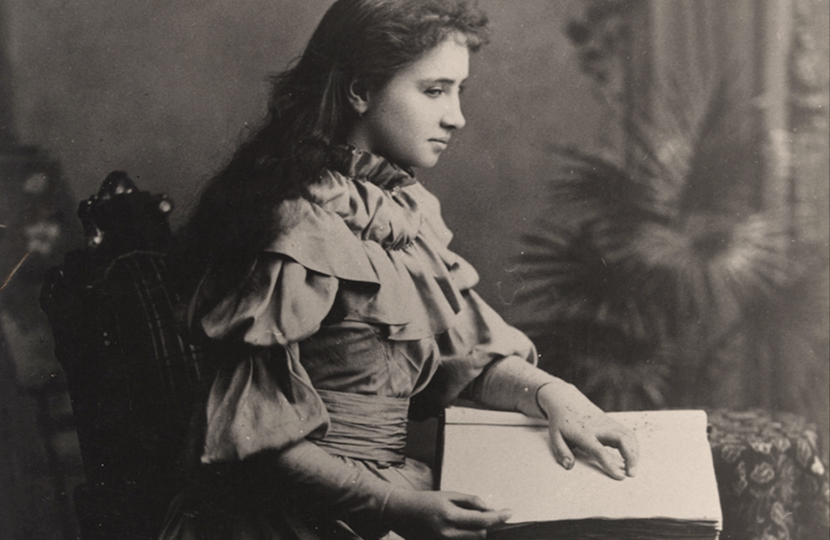
In 1900, Keller gained admission to Radcliffe College of Harvard University, along with her loyal teacher Anne,
who attended alongside her to help interpret lectures and texts.
Her admirer, Mark Twain, had introduced her to Standard Oil magnate Henry Huttleston Rogers,
who, with his wife Abbie, paid for her education.
In 1904, at the age of 24, Keller graduated as a member of Phi Beta Kappa from Radcliffe, with a Bachelor of Arts degree.
Thus, Keller became the first deaf and blind person to earn a college degree.
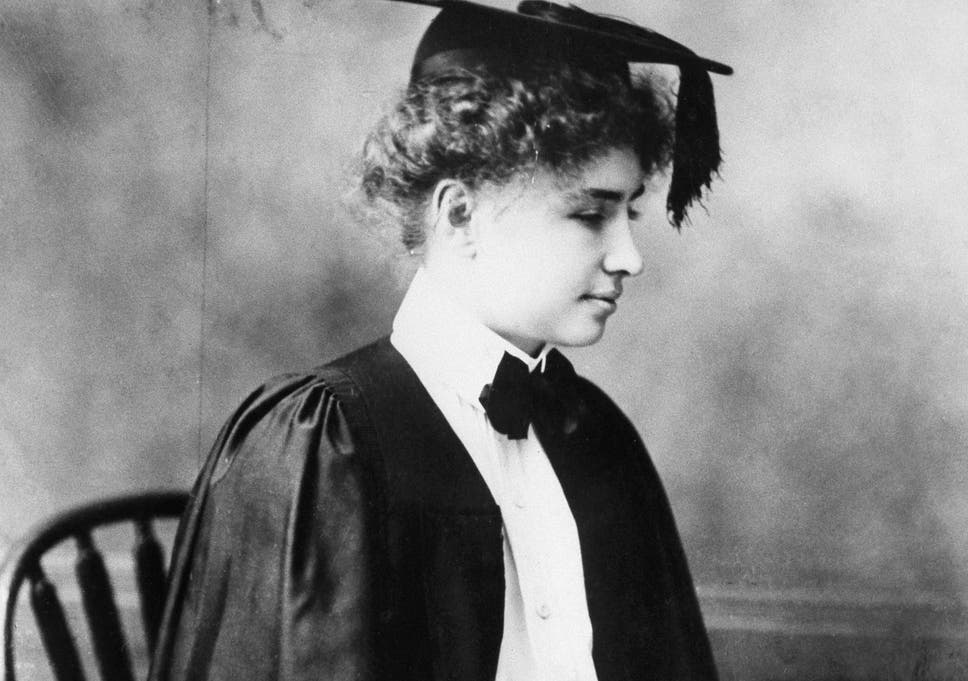
The Author
At age 22, Keller published her autobiography, “The Story of My Life” (1903), with help from Sullivan and her husband, John Macy.

From Wikipedia. Image is available in the United States
Library of Congress‘s Prints and Photographs division
When Keller was young, Anne Sullivan introduced her to Phillips Brooks, who introduced her to Christianity, with Keller famously saying:
“I always knew He was there, but I didn’t know His name!”
Her spiritual autobiography, “My Religion”, was published in 1927 and
then in 1994 extensively revised and re-issued under the title “Light in My Darkness”.
Keller wrote a total of 12 published books and several articles
Her initiatives & accomplishments
Keller went on to become a world-famous speaker and author.
She is remembered as an advocate for people with disabilities, amid numerous other causes.
In 1915, Keller and George A. Kessler founded the Helen Keller International (HKI) organization,
devoted to research in vision, health, and nutrition.
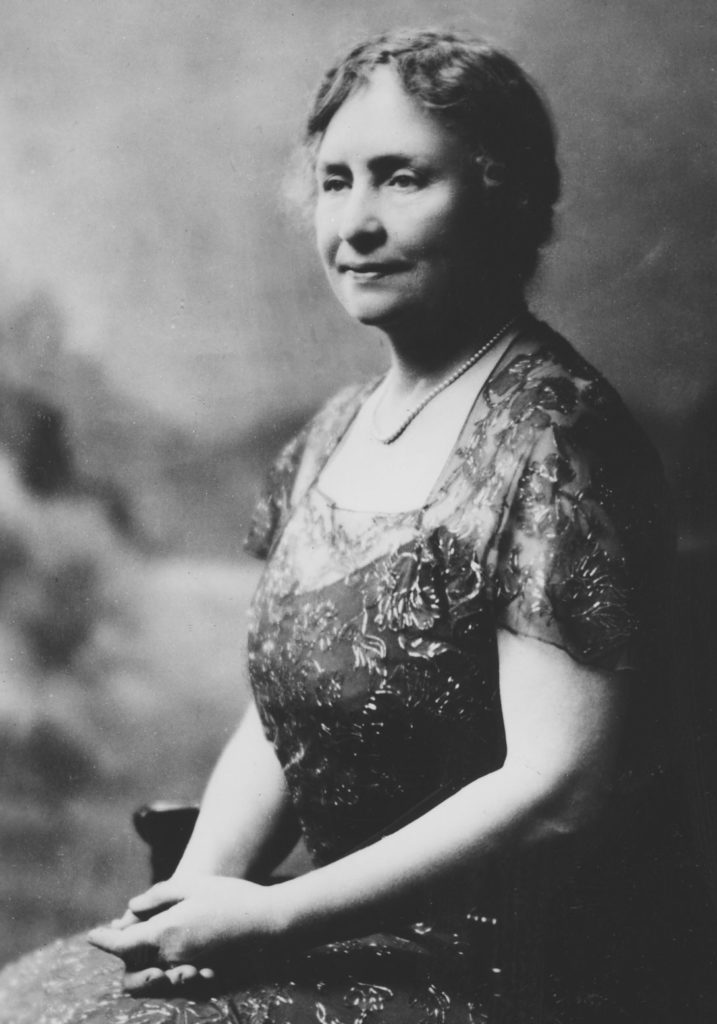
Courtesy of the American Foundation for the Blind
In 1920, she helped to found the American Civil Liberties Union (ACLU).
Keller met every U.S. president from Grover Cleveland to Lyndon B. Johnson and was friends with many famous figures,
including Alexander Graham Bell, Charlie Chaplin and Mark Twain.
Keller was a member of the Socialist Party.
She actively campaigned and wrote in support of the working class, for women’s rights and the impacts of war
Her last days
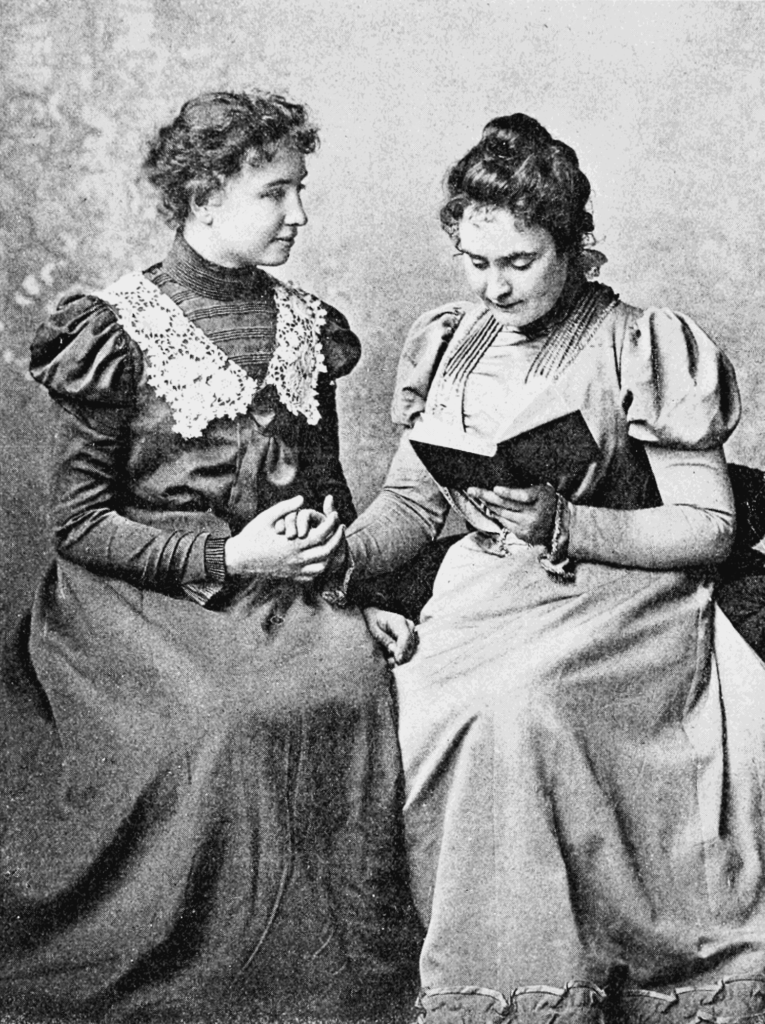
Photo taken by Alexander Graham Bell at his School of Vocal Physiology and Mechanics of Speech.
Anne Sullivan died in 1936, with Keller holding her hand, after falling into a coma as a result of coronary thrombosis.
Keller suffered a series of strokes in 1961 and spent the last years of her life at her home.
She died in her sleep on June 1, 1968, at her home at her home, Arcan Ridge, located in Easton, Connecticut.
A service was held in her honor at the National Cathedral in Washington, D.C., her body was cremated
and her ashes were placed there next to her teacher & companion, Anne Sullivan
Honors
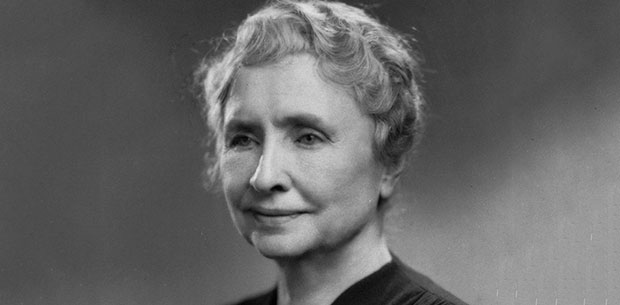
On September 14, 1964, President Lyndon B. Johnson awarded her the Presidential Medal of Freedom,
one of the United States’ two highest civilian honors.
In 1965 she was elected to the National Women’s Hall of Fame at the New York World’s Fair.
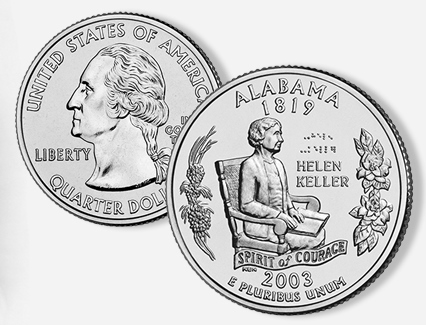
In 2003, Alabama honored its native daughter on its state quarter.
The Alabama state quarter is the only circulating U.S. coin to feature braille.
Famous Quotes by Helen Keller
“The best and most beautiful things in the world cannot be seen nor even touched,
but just felt in the heart.”

“Life is either a daring adventure or nothing.”

“We are never really happy
until we try to brighten the lives of others.”

“If I, deaf, blind, find life rich and interesting,
how much more can you gain by the use of your five senses!”

References:
https://en.wikipedia.org/wiki/Helen_Keller
https://www.mentalfloss.com/article/81472/10-things-you-might-not-know-about-helen-keller




